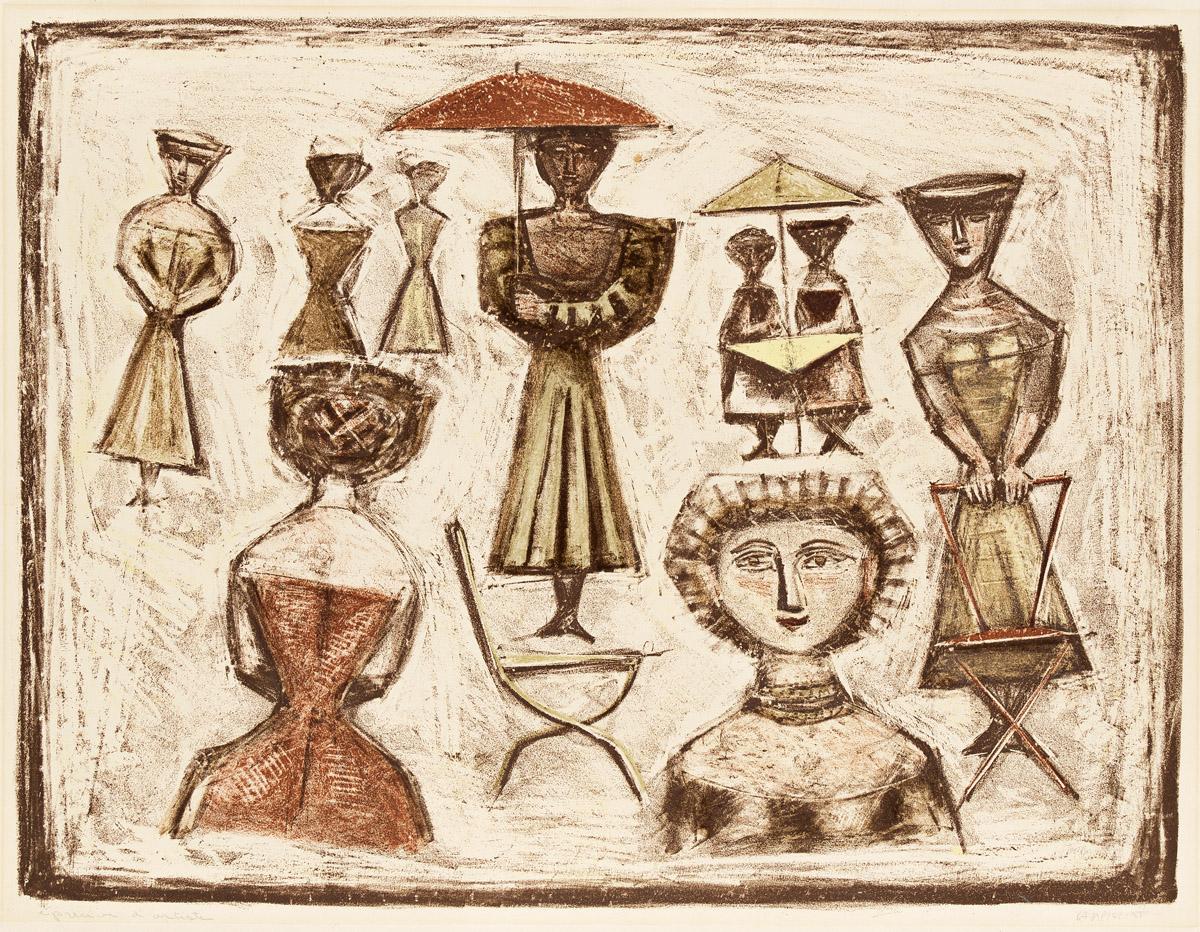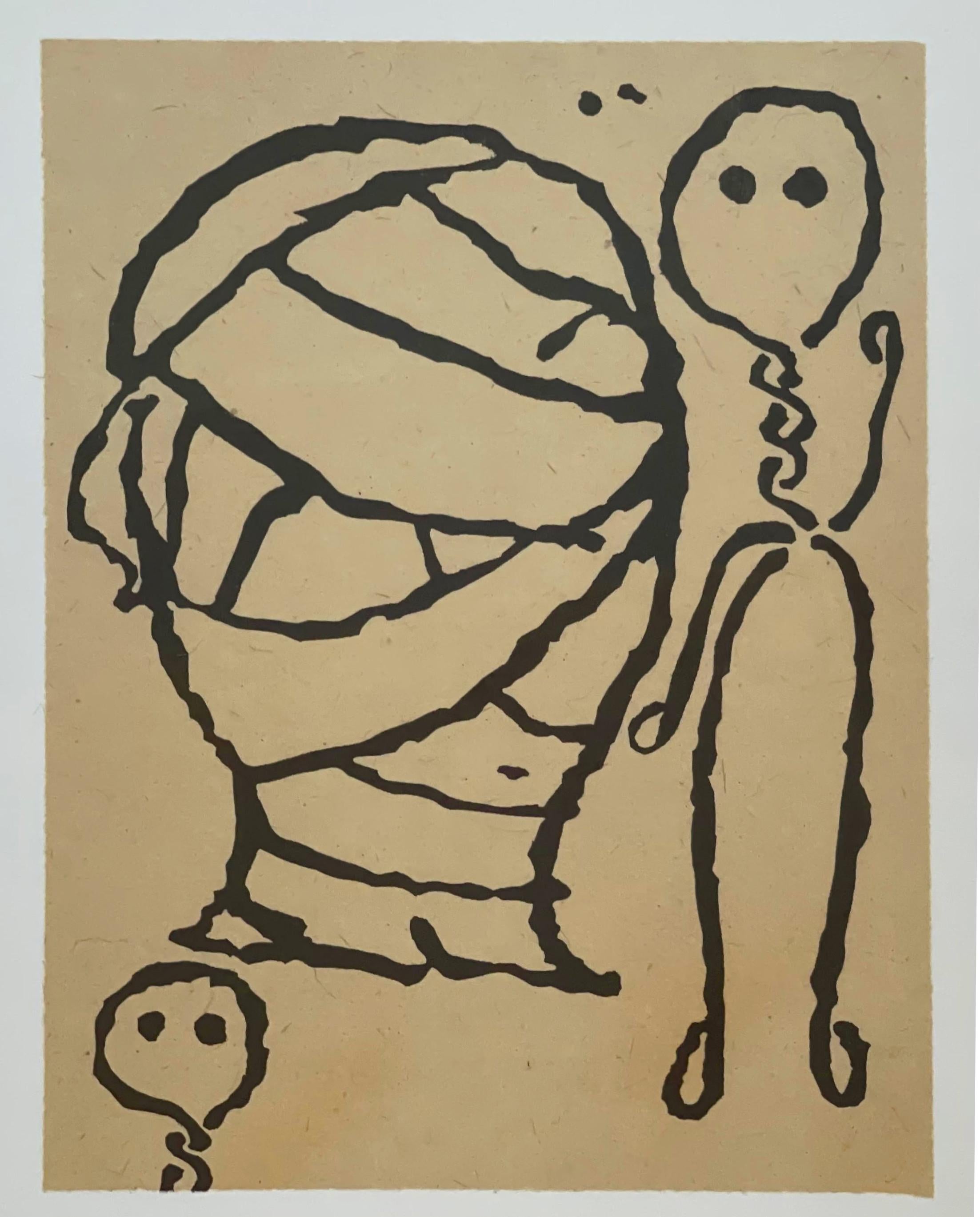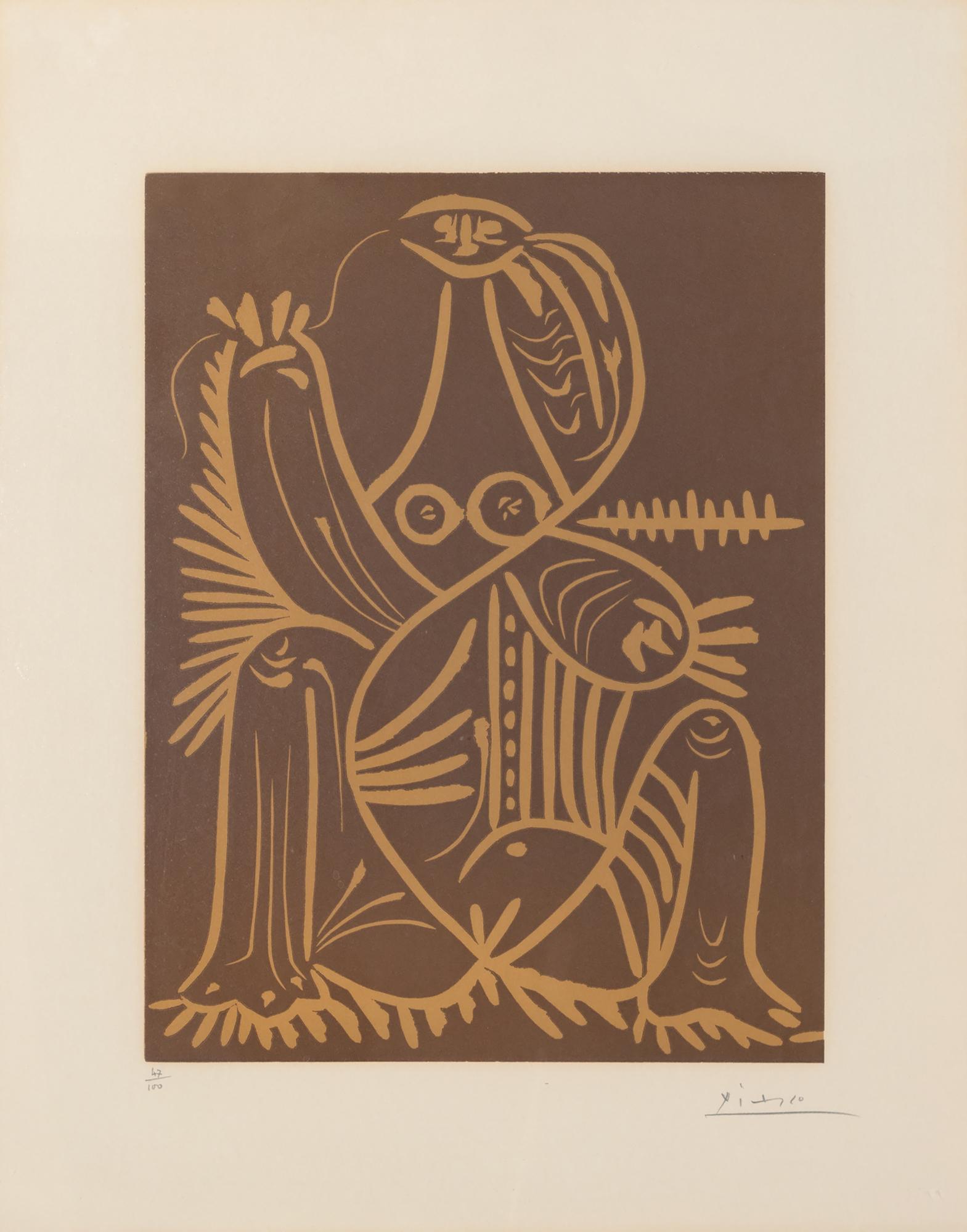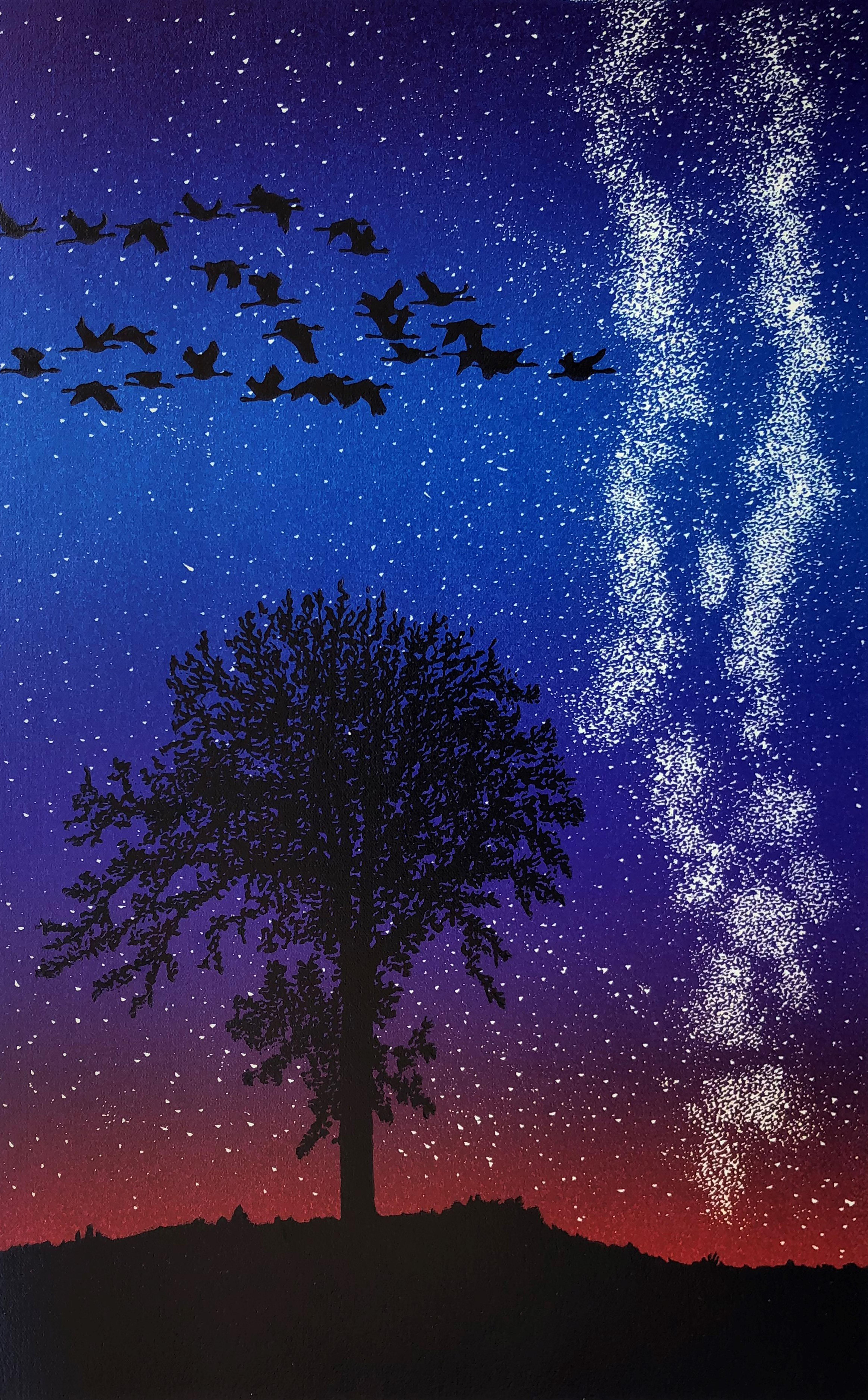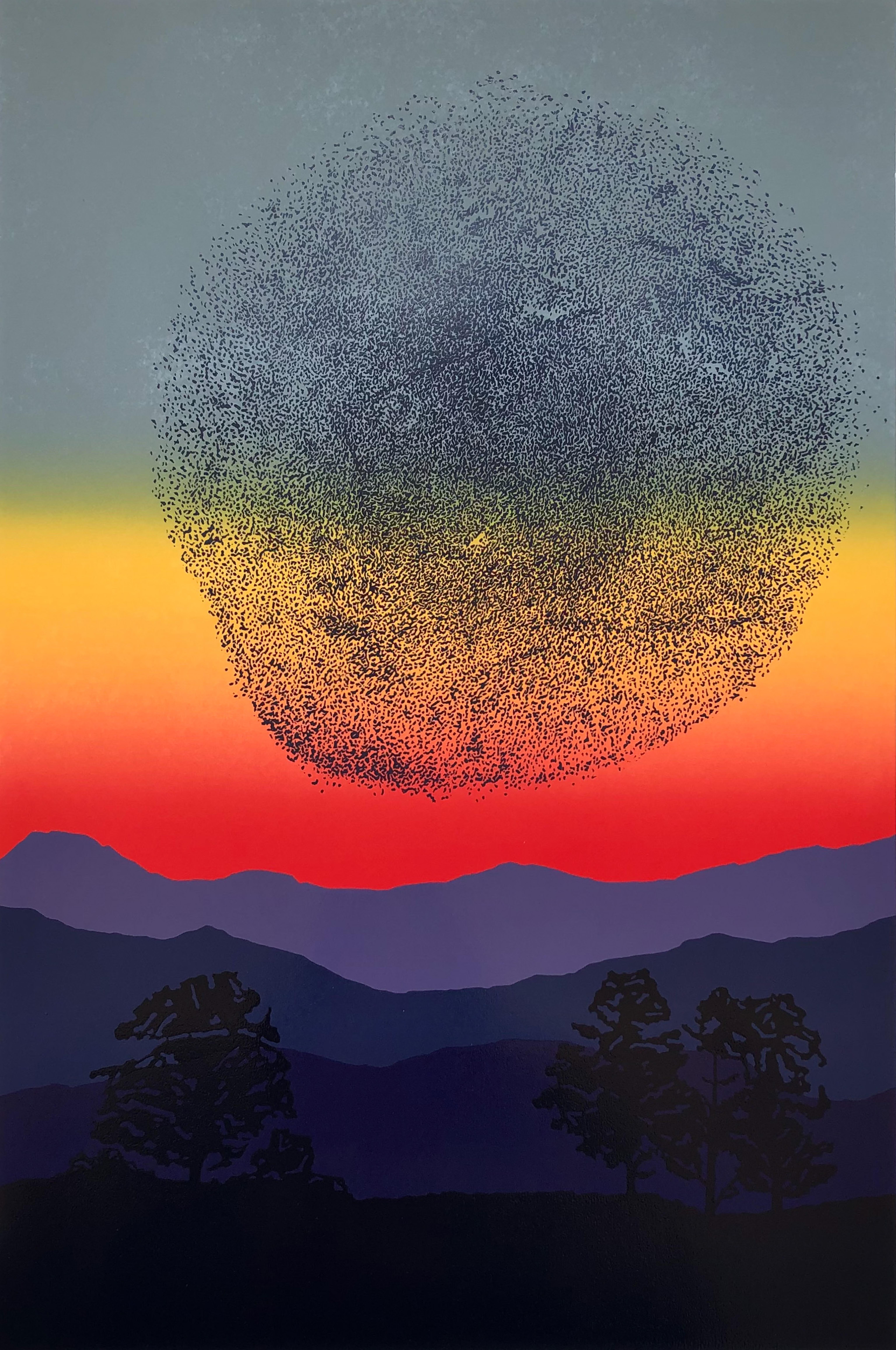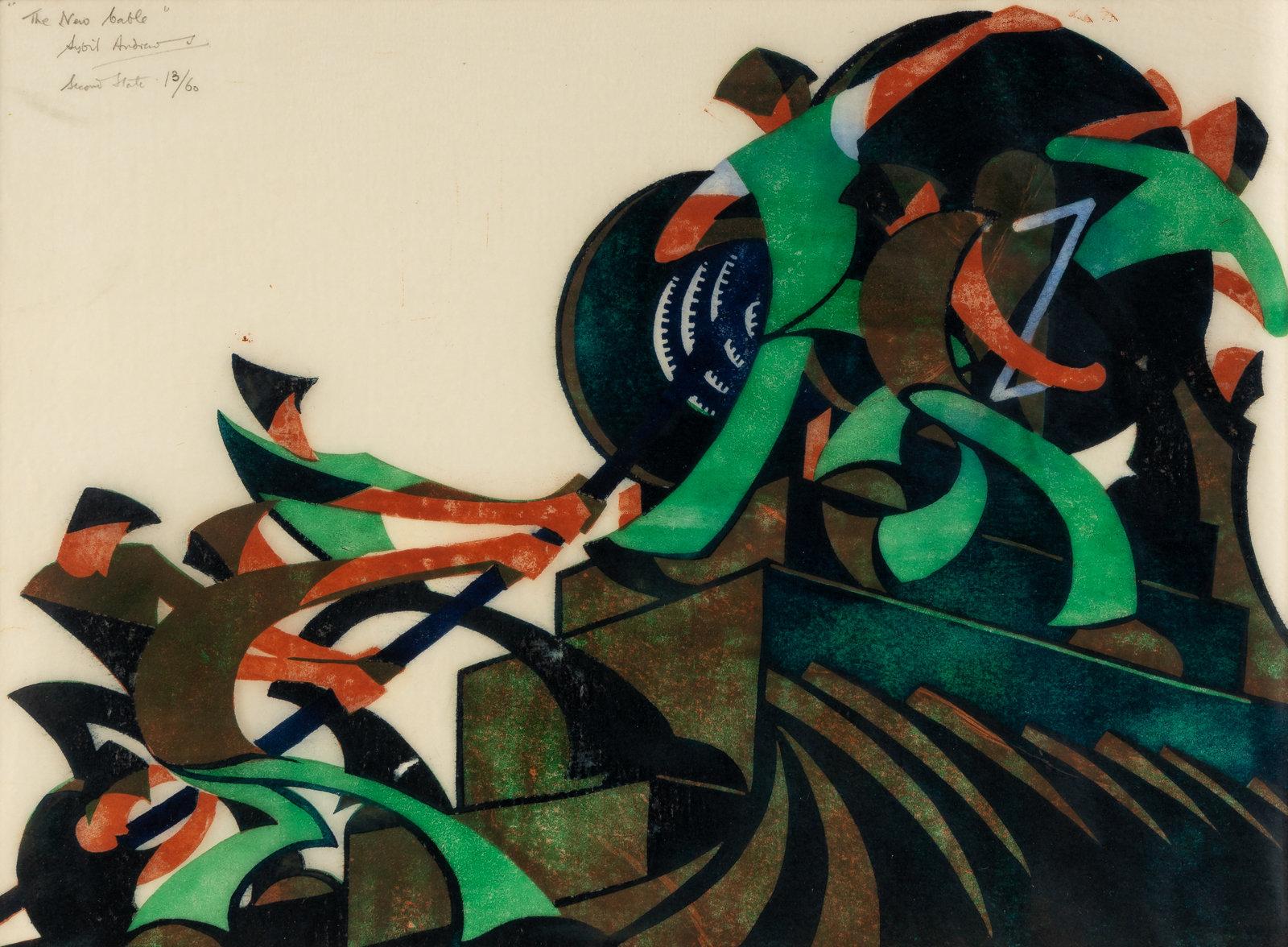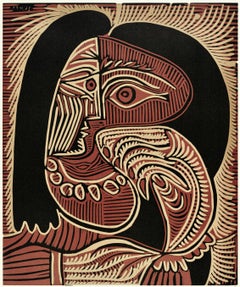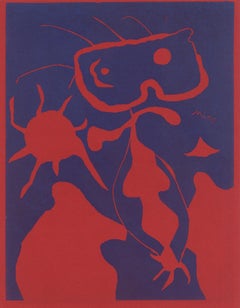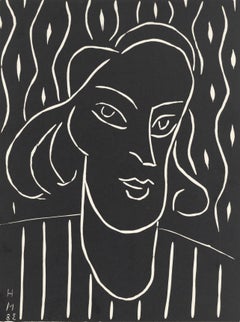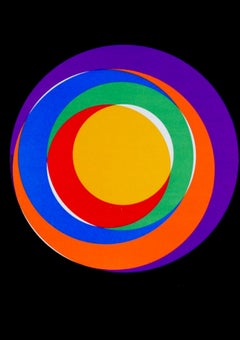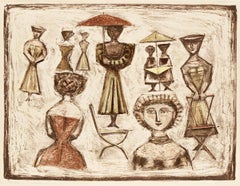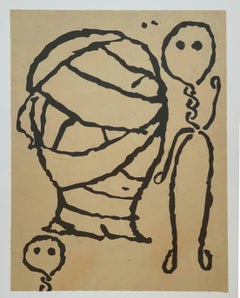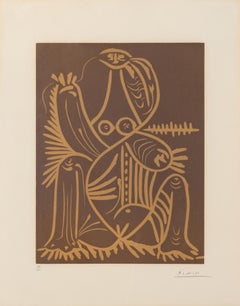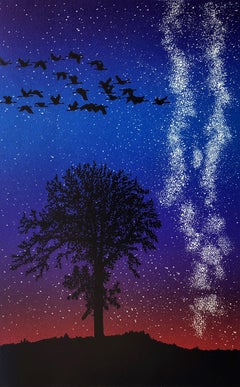Items Similar to Severini, Gravure Futuriste, XXe Siècle (after)
Want more images or videos?
Request additional images or videos from the seller
1 of 5
Severini, Gravure Futuriste, XXe Siècle (after)1939
1939
About the Item
Linocut on vélin paper. Inscription: Unsigned and unnumbered, as issued. Good condition. Notes: From the volume, XXe Siècle, vol. n° 5-6, 1939. Published and printed under the direction of Gualtieri di San Lazzaro, éditeur, Paris, by Société Internationale d'Art XXe siècle, Paris. Excerpted from the academic article, “Promoting Original Prints, The Role of Gualtieri di San Lazzaro and XXe Siècle” by Valerie Holman, published in PRINT QUARTERLY, XXXIII, 2016, 2, Until recently very little has been written on the Italian author and art publisher Gualtieri di San Lazzaro (1904-75), yet for 50 years he chronicled the life and work of contemporary artists, produced monographs of exceptional quality, and disseminated original prints by modern painters and sculptors through his best-known periodical, XXe Siècle. Although still a relatively unfamiliar figure in the United Kingdom, San Lazzaro is one of the half-dozen great art publishers of the mid-twentieth century who, together with his exemplar, Ambroise Vollard (1866-1939), and those of his own generation, Christian Zervos (1889-1970), Tériade (1889-1983) and Albert Skira (1904-73), chose to base himself in Paris, seeing it throughout his life as the centre of the art world….XXe Siècle, an illustrated periodical, was launched in 1938 and printed in editions of approximately 2,000, each issue containing both photographs and four-colour separation reproductions across a wide spectrum of visual imagery ranging from masterpieces of Western painting to popular prints from the Far East. Its large format, lively design, and close integration of text and image, were immediately striking, but its most innovative feature, introduced at the suggestion of Hans Arp (1886-1966), was the inclusion of original prints by contemporary artists in every issue. With obvious appeal for collectors, XXe Siècle was also designed to introduce a wider, international public to contemporary painting and sculpture through good quality colour reproductions and the immediacy of original prints. Comparable in price to Cahiers d'Art, early issues of XXe Siècle sold out rapidly. While San Lazzaro's own aesthetic preferences tended towards lyric abstraction, he made clear that XXe Siècle was non-partisan [publication ceased during World War II]….in 1951, San Lazzaro relaunched XXe Siècle with thematic issues that were materials based, or centred on a topic of current interest in the visual arts, particularly in Europe: concepts of space, matter, monochrome, mark-making and the sign.' A defining feature of the new series was Italy's artistic dialogue with France for, while San Laz-zaro had originally concentrated on Paris-based painters and sculptors, his aim was to create an international network, to make known the work of French artists in Italy and Italian artists in France, and subsequently extend this bilateral axis to the English-speak-ing world. The artists represented in No. I by an original print were all best known as sculptors: Arp, Laurens, Henry Moore (1898-186) and Marino Marini, San Lazzaro not only sought to show readers the full range of an artist's work, but to encourage the production of prints, a stimulus much appreciated, for example, by Magnelli…. Suffering from failing health, in 1968 San Lazzaro lost overall control of XXe Siècle to Léon Amiel, a printer-publisher who had provided financial backing and helped with distribution in America." Thematic issues now ceased and were replaced by a 'panorama' of the year, but San Lazzaro was still active as a publisher of books and albums of prints….Shortly after his death, San Lazzaro himself was the subject of two exhibitions: 'Omaggio a XXe Siècle' in Milan in December 1974 centred on graphic work by those artists closest to him late in life, while 'San Laz-zaro et ses Amis' at the Musée d'Art Moderne de la Ville de Paris in 1975 featured work by all those whose work he had promoted for more than 50 years: Arp, Calder (1898-1976), Capogrossi, Chagall, Sonia Delau-nay, Dubuffet, Estève, Lucio Fontana (1899-1968), Gili-oli (1911-77), Magnelli, Marini, Miró, Moore and Poliakoff. This exhibition was seen by one of his closest colleagues as an indirect portrait of San Lazzaro, a complex man whose modesty and reserve masked his unremitting drive to extend international appreciation of contemporary art, and to bring the reading public closer to its making through the medium of print.
GINO SEVERINI (1883-1966), belonged to the Futurist movement from the outset and the many years he lived in France made him an important bridge between Italian and French art. He grew up in Cortona and in 1899 he and his mother moved to Rome, where he started his training at a drawing school known as Gli Incurabili. In 1901 he met Umberto Boccioni, with whom he began to frequent the studio of Giacomo Balla, who introduced him to the Divisionist technique of Georges Seurat, which influenced him for much of his life. Dissatisfied with the Roman art Scene, Severini went to live in Paris in autumn 1906. There he met the habitual Montmartre artists such as Maurice Raynal, Pablo Picasso, Juan Gris, Georges Braque and Max Jacob, and this contact brought his work closer to Cubism. In 1910 he received a letter from Boccioni inviting him to sign the Futurist Manifesto, as a result of which he embarked on a new path in an attempt to explore dynamism and speed. This evolution led to an increasingly less figurative art in which his primary interest was to explore the effects of light as energy. Soon afterwards he signed the Second Futurist Manifesto and took part in the group exhibitions. In 1914 he wrote his own manifesto, Les Analogies plastiques dans le dynamism, which was not published until much later.
About the Seller
4.9
Platinum Seller
Premium sellers with a 4.7+ rating and 24-hour response times
Established in 1978
1stDibs seller since 2021
1,113 sales on 1stDibs
Typical response time: <1 hour
- ShippingRetrieving quote...Shipping from: Auburn Hills, MI
- Return Policy
Authenticity Guarantee
In the unlikely event there’s an issue with an item’s authenticity, contact us within 1 year for a full refund. DetailsMoney-Back Guarantee
If your item is not as described, is damaged in transit, or does not arrive, contact us within 7 days for a full refund. Details24-Hour Cancellation
You have a 24-hour grace period in which to reconsider your purchase, with no questions asked.Vetted Professional Sellers
Our world-class sellers must adhere to strict standards for service and quality, maintaining the integrity of our listings.Price-Match Guarantee
If you find that a seller listed the same item for a lower price elsewhere, we’ll match it.Trusted Global Delivery
Our best-in-class carrier network provides specialized shipping options worldwide, including custom delivery.More From This Seller
View AllPicasso, Femme au collier (Orozco 214), Grabados al linóleo (after)
By Pablo Picasso
Located in Auburn Hills, MI
Linocut on vélin paper. Paper Size: 12.5 x 14.5 inches; image size: 10.5 x 8.75 inches. Inscription: Unsigned and unnumbered, as issued. Catalogue raisonné reference: Orozco, M. (201...
Category
1960s Cubist Abstract Prints
Materials
Linocut
$796 Sale Price
20% Off
Free Shipping
Miró, Composition (Cramer 6; Dupin 40; Mourlot 1967), XXe Siècle (after)
By Joan Miró
Located in Auburn Hills, MI
Linocut on vélin paper. Inscription: Unsigned and unnumbered, as issued. Good condition. Notes: From the volume, XXe Siècle, n°4, Christmas 1938. Published and printed under the dire...
Category
1930s Surrealist Figurative Prints
Materials
Linocut
$1,996 Sale Price
20% Off
Free Shipping
Matisse, Teeny (Duthuit 723), XXe Siècle (after)
By Henri Matisse
Located in Auburn Hills, MI
Linocut on vélin paper. Inscription: Unsigned and unnumbered, as issued. Good condition. Notes: From the volume, XXe Siècle, vol. n°4, 1938. Published and printed under the direction...
Category
1930s Modern Figurative Prints
Materials
Linocut
Bill, Composition, XXe Siècle (after)
By Max Bill
Located in Auburn Hills, MI
Linocut on vélin paper. Inscription: Unsigned and unnumbered, as issued. Good condition. Notes: From the volume, XXe Siècle, vol. n°4, 1938. Published and printed under the direction of Gualtieri di San Lazzaro, éditeur, Paris, by Société Internationale d'Art XXe siècle, Paris. Excerpted from the academic article, “Promoting Original Prints, The Role of Gualtieri di San Lazzaro and XXe Siècle” by Valerie Holman, published in PRINT QUARTERLY, XXXIII, 2016, 2, Until recently very little has been written on the Italian author and art publisher Gualtieri di San Lazzaro (1904-75), yet for 50 years he chronicled the life and work of contemporary artists, produced monographs of exceptional quality, and disseminated original prints by modern painters and sculptors through his best-known periodical, XXe Siècle. Although still a relatively unfamiliar figure in the United Kingdom, San Lazzaro is one of the half-dozen great art publishers of the mid-twentieth century who, together with his exemplar, Ambroise Vollard (1866-1939), and those of his own generation, Christian Zervos (1889-1970), Tériade (1889-1983) and Albert Skira (1904-73), chose to base himself in Paris, seeing it throughout his life as the centre of the art world….XXe Siècle, an illustrated periodical, was launched in 1938 and printed in editions of approximately 2,000, each issue containing both photographs and four-colour separation reproductions across a wide spectrum of visual imagery ranging from masterpieces of Western painting to popular prints from the Far East. Its large format, lively design, and close integration of text and image, were immediately striking, but its most innovative feature, introduced at the suggestion of Hans Arp (1886-1966), was the inclusion of original prints by contemporary artists in every issue. With obvious appeal for collectors, XXe Siècle was also designed to introduce a wider, international public to contemporary painting and sculpture through good quality colour reproductions and the immediacy of original prints. Comparable in price to Cahiers d'Art, early issues of XXe Siècle sold out rapidly. While San Lazzaro's own aesthetic preferences tended towards lyric abstraction, he made clear that XXe Siècle was non-partisan [publication ceased during World War II]….in 1951, San Lazzaro relaunched XXe Siècle with thematic issues that were materials based, or centred on a topic of current interest in the visual arts, particularly in Europe: concepts of space, matter, monochrome, mark-making and the sign.' A defining feature of the new series was Italy's artistic dialogue with France for, while San Laz-zaro had originally concentrated on Paris-based painters and sculptors, his aim was to create an international network, to make known the work of French artists in Italy and Italian artists in France, and subsequently extend this bilateral axis to the English-speak-ing world. The artists represented in No. I by an original print were all best known as sculptors: Arp, Laurens, Henry Moore (1898-186) and Marino Marini, San Lazzaro not only sought to show readers the full range of an artist's work, but to encourage the production of prints, a stimulus much appreciated, for example, by Magnelli…. Suffering from failing health, in 1968 San Lazzaro lost overall control of XXe Siècle to Léon Amiel, a printer-publisher who had provided financial backing and helped with distribution in America." Thematic issues now ceased and were replaced by a 'panorama' of the year, but San Lazzaro was still active as a publisher of books and albums of prints….Shortly after his death, San Lazzaro himself was the subject of two exhibitions: 'Omaggio a XXe Siècle' in Milan in December 1974 centred on graphic work by those artists closest to him late in life, while 'San Laz-zaro et ses Amis' at the Musée d'Art Moderne de la Ville de Paris in 1975 featured work by all those whose work he had promoted for more than 50 years: Arp, Calder (1898-1976), Capogrossi, Chagall, Sonia Delau-nay, Dubuffet, Estève, Lucio Fontana (1899-1968), Gili-oli (1911-77), Magnelli, Marini, Miró, Moore and Poliakoff. This exhibition was seen by one of his closest colleagues as an indirect portrait of San Lazzaro, a complex man whose modesty and reserve masked his unremitting drive to extend international appreciation of contemporary art, and to bring the reading public closer to its making through the medium of print.
MAX BILL (1908-1994) was a Swiss architect, artist, painter, typeface designer, industrial designer and graphic designer. Bill is widely considered the single most decisive influence on Swiss graphic design beginning in the 1950s with his theoretical writing and progressive work. His connection to the days of the Modern Movement gave him special authority. As an industrial designer, his work is characterized by a clarity of design and precise proportions. Examples are the elegant clocks and watches designed for Junghans, a long-term client. Among Bill's most notable product designs is the "Ulmer Hocker...
Category
1930s Surrealist Figurative Prints
Materials
Linocut
Hélion, Composition, XXe Siècle (after)
By Jean Hélion
Located in Auburn Hills, MI
Linocut on vélin paper. Inscription: Unsigned and unnumbered, as issued. Good condition. Notes: From the volume, XXe Siècle, n°4, Christmas 1938. Published and printed under the dire...
Category
1930s Surrealist Figurative Prints
Materials
Linocut
de Chirico, Composition, XXe Siècle (after)
By Giorgio De Chirico
Located in Auburn Hills, MI
Linocut on wove paper. Inscription: Unsigned and unnumbered, as issued. Good condition. Notes: From the volume, XXe Siècle, n°4, Christmas 1938. Published and printed under the direc...
Category
1930s Surrealist Figurative Prints
Materials
Linocut
You May Also Like
Passeggiata Romana
By Massimo Campigli, 1895-1971
Located in New York, NY
A very good impression of this color lithograph. Artist's proof, aside from the edition of 175. Signed, dated and inscribed "Epreuve d'artiste" in pencil. Printed by Desjobert, Paris...
Category
1950s Futurist Abstract Prints
Materials
Color Pencil, Lithograph
Donald Baechler, The Benefit Mummy Linoleum print Chine Colle signed 7/17 Framed
By Donald Baechler
Located in New York, NY
Donald Baechler
The Benefit Mummy, 2005
Linoleum print, one color, with chine colle, on Rives BFK paper
Rare print from an edition of only 17, with documentation sheet from Artist's ...
Category
Early 2000s Pop Art Abstract Prints
Materials
Linocut
Femme assise en pyjama de plage
By Pablo Picasso
Located in Palm Desert, CA
"Femme assise en pyjama de plage" is a linocut by Pablo Picasso. It is edition 47/100. The work is signed in the lower right, "Picasso". The framed size is 23 1/4 x 18 5/8 x 1 1/2 in...
Category
Mid-20th Century Surrealist Abstract Prints
Materials
Linocut
Flight - Handmade Linocut, Monotype, Limited Edition Print Unique 1/7
By Aneta Szoltis-Mencina
Located in Salzburg, AT
The artwork will be sent unframed
Linocut print „ Flight” 2022
Linocut and monotype print technique
Art print from 4 matrices
Limited edition, print unique number 1/7
Paper Fabriano...
Category
2010s Contemporary Abstract Prints
Materials
Paper, Linocut
Murmurations - Handmade Linocut, Limited Edition Print Unique 3/5
By Aneta Szoltis-Mencina
Located in Salzburg, AT
The artwork will be sent unframed
Linocut print „Murmurations” 2021
Linocut colorful print technique
Linocut from 6 matrices
Limited edition, print unique number 3/5
Paper Fabriano R...
Category
2010s Contemporary Abstract Prints
Materials
Paper, Linocut
The New Cable British Modern Mid 20th Century Vorticist European Vorticism Woman
By Sybil Andrews
Located in New York, NY
The New Cable British Modern Mid 20th Century Vorticist European Vorticism Woman
Sybil Andrews CPE (British/Canadian, 1898-1992)
"The New Cable," 1931
12 x 16 1/2 inches
Color linocut
Signed, titled, inscribed 'Second State', and numbered 13/60 in pencil
Framed: 19 x 24 inches
Literature: Coppel Sa17
Illustrated on page 10 of the catalog
The proposed edition of the first state of the Giant Cable was 50, but only 30 impressions were pulled. Andrews removed the blue background for the second state, which was published under the title The New Cable in an edition of 60.
BIO
Sybil Andrews was a printmaker, painter, graphic artist and educator who was born in Bury St. Edmonds, Suffolk, England. She moved to London (England) in 1922. In 1947, she emigrated to Campbell River (Vancouver Island) British Columbia, Canada, where she worked, taught and lived for the rest of her life. She died at a hospital in Victoria (B.C.)
Her mediums were the colour linocut (1) (most famous), etching, posters, pastels, ink, watercolour, monoprint and oil. Her subjects were human activity (at work, sports, travel, etc.), figures, animals, genre, allegory, architecture and landscape. Her style was Art Deco (see AskART styles), Futurism, Cubism and Vorticism (2). Her work is identified by a simple format, clean lines, distortion, vivid colours, drama and rhythm.
Quote: "The colour linocut was just the medium for me, being interested in dynamics and ideas and patterns... It is impossible to be fussy with lines, you have to simplify, you are forced to simplify your idea to its fundamentals." Andrews produced 76 linocuts in her life, of which 43 were made from 1929 to 1939, which is considered to be her best period.
John Hassall's art correspondence course (1918) was the beginning of her formal art education. She went from there to Heatherley's School of Fine Art (London/1922) where she studied under Henry Massey (see AskART) and met artistic partner Cyril Power (see AskART). At the same time, she studied independently with sculptor Henri Glicenstein (see AskART) who taught her drypoint etching and to draw from life.
She also attended the Grosvenor School of Modern Art (1925). Iain McNab (1890-1967) was Principal and Claude Flight (3) (see AskART) an instructor who had a great influence on her choice of linocut as a primary medium. Some of his other students and her associates were Edith Lawrence (1890-1973), Lill Tschudi (1911-2001), Eileen Mayo (see AskART) and William Greengrass (1896-1970). After emigrating to Canada she taught art continuously until a month before her death.
She was elected a member of the Canadian Painters - Etchers Society (after 1976 the Print and Drawing Council of Canada) in 1951.
She began exhibiting her work in 1921.In 1929 she was included in "The First Exhibition of British Linocuts...
Category
1930s Modern Figurative Prints
Materials
Linocut
